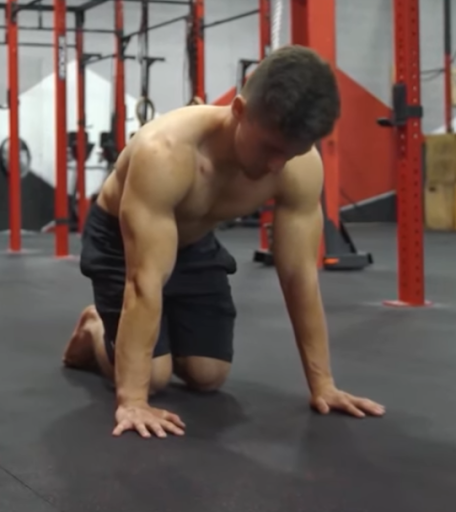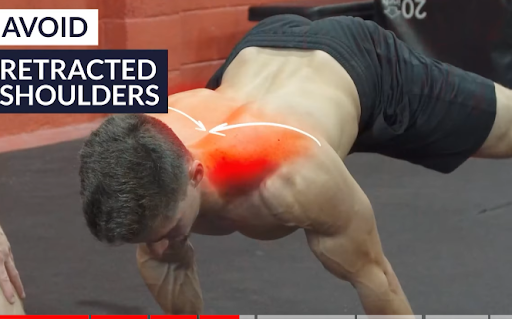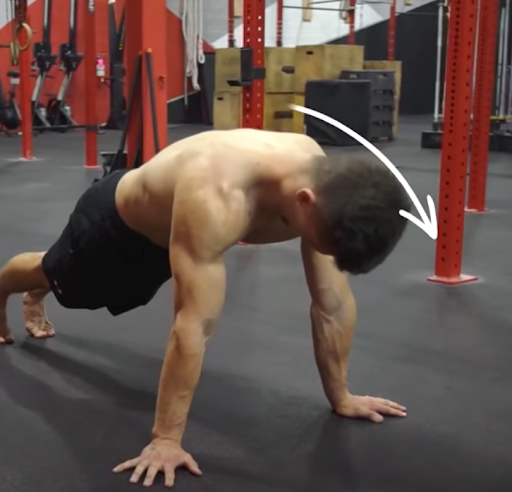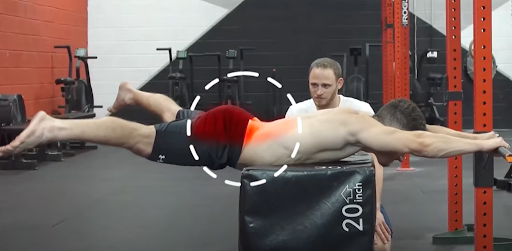Does this sound familiar? You’ve been trying to master the planche for ages, but every session ends with shaky arms, sore wrists, and zero progress. It feels like everyone else is flying through their planche progressions while you’re stuck in place.
👊The truth is, you might be closer than you think—but a few common mistakes are slowing you down.
This article will help you identify those mistakes and show you how to fix them so you can train smarter, avoid setbacks, and get closer to your planche goal with every session.
✨What is the Planche?
So, what exactly is the planche? Let’s break it down.
The planche is a full-body exercise where your body hovers parallel to the ground, supported solely by your arms. It’s not just an impressive feat—it’s a stunning display of strength, control, and balance. Every muscle in your body, from your shoulders to your core, is engaged to maintain that perfect horizontal hold.
But here’s the catch: the planche demands incredible upper body strength, shoulder stability, and core engagement. It’s a true test of athleticism and patience. Mastering it isn’t something that happens overnight. However, with the correct technique, progressions, and dedication, you can build the strength and control needed to achieve it.
The 👍Do’s and 🚫Don’ts: Avoid These Mistakes and Train Smart
Training for the planche is a challenging journey requiring strength, technique, and patience. To get the most out of your sessions—and avoid unnecessary setbacks—it’s important to train smart.
Let’s dive into the key dos and don’ts that will keep you on track and progressing safely toward your goal.
1. ✊ Don’t Place Your Hands Straight
One of the first mistakes beginners make is placing their hands straight in front of them when attempting the planche. While this might feel natural, it puts excessive strain on your wrists and limits your ability to balance properly. This hand position forces your body to fight against gravity inefficiently, increasing the likelihood of wrist pain and making it much harder to hold the position.
Do this Instead: Place Your Hands Sideward
Do place your hands sideward, with your fingers pointing outward. Turning your hands slightly outward creates a more stable base for your body. This reduces the strain on your wrists and shifts some of the workload to your arms and shoulders, improving your balance and making it easier to support your body weight.
2. ✊ Don’t Skip Time Under Tension
A common mistake in planche training is rushing through the progressions without spending enough time holding each position. If you don’t give your muscles time to adapt to the load, you’re missing out on essential strength-building opportunities. Skipping time under tension not only slows down your progress but can also lead to poor form.
Do this Instead: Hold the Planche Position Longer
The longer you hold each progression (like the tuck or advanced tuck), the more your muscles adapt to the specific demands of the planche. Time under tension helps strengthen your core, shoulders, and wrists, which are crucial for a stable planche. Start by holding each position for as long as possible, and gradually increase your hold time as you get stronger.
3. ✊ Don’t Use a Bent-Arm Position
It’s tempting to bend your arms while training for the planche, as it feels easier to support your body weight. However, bent arms shift the load away from your shoulders and triceps, which are vital to building the strength needed for the full planche. Bent-arm holds will limit your ability to progress toward the real thing.
Do this Instead: Use a Straight-Arm Position
Do use a straight-arm position. Locking your arms engages your shoulders, triceps, and upper back muscles, helping you build the straight-arm strength fundamental to holding a full planche. This straight-arm position ensures correct form and reduces the risk of injury as you strengthen your joints and muscles properly.
4. ✊ Don’t Retract Your Shoulders
Retracting your shoulders might feel like it gives you more control, but it’s a mistake that limits the activation of key muscles in your shoulders and upper back. When your shoulders are retracted, achieving the proper body position and stability needed for the planche becomes harder.
Do this Instead: Protract Your Shoulders
Focus on protracting your shoulders by pushing your shoulder blades apart, which helps engage your scapula and supports your body in the planche. This adjustment is crucial for building strength and stability, allowing you to hold the position in proper form and progress safely.
5. ✊ Don’t Let Bad Habits from Previous Progressions Linger
Carrying bad habits from earlier planche progressions can sabotage your efforts in more advanced stages. Whether using too much momentum or improper form during tuck or straddle variations, these habits will hold you back from reaching your full planche potential.
Do this Instead: Fix Your Form at Every Stage
Take the time to perfect your form in each progression. Whether tuck planche or straddle planche, focus on control, tension, and technique. Correcting bad habits early on will allow you to develop the strength and stability needed to advance without setbacks.
6. ✊ Don’t Ignore Your Core
Many athletes mistakenly believe the planche is all about upper body strength. However, ignoring your core is one of the biggest mistakes you can make. A strong, engaged core stabilizes your body and maintains alignment throughout the planche.
Do this Instead: Prioritize Core Engagement
Make core strengthening a regular part of your training. Incorporate exercises like hollow body holds, L-sits, and dragon flags to build the necessary core strength. When practicing planche variations, always focus on engaging your core and keeping your body aligned for optimal stability and control.
7. ✊ Don’t Forget to Rest
When you’re determined to master the planche, it can be tempting to push yourself every day. But training without breaks can backfire. Overtraining leads to muscle fatigue, burnout, and even injury, slowing your progress. According to a study, chronic overtraining increases oxidative stress and inflammation in muscles, exacerbating muscle fatigue and delaying recovery.
Your body needs time to recover from those intense sessions. Without that recovery, you risk hitting a plateau or setting yourself up for an injury that could take you out of the game.
Do this Instead: Schedule Regular Rest Days
The real magic happens when you rest. After a challenging workout, your muscles need time to repair and grow stronger. Scheduling rest days into your planche training allows you to come back refreshed, stronger, and more ready to push your limits. With proper recovery, you’ll make consistent progress and reduce the risk of setbacks. Rest isn’t optional—it’s essential!
Related article: 📍Planche Perfection: Avoid These 6 Worst Mistakes and How to Fix Them
🔥 How Long Does It Take to Master the Planche?
Mastering the planche isn’t a quick journey—it’s a long-term commitment that requires patience and persistence. For some, it might take a few months; for others, it could take years. The timeline depends on several factors, including your current strength, flexibility, and, most importantly, your consistency.
It’s easy to get discouraged when progress feels slow, but remember, every slight improvement gets you closer to your goal. Instead of obsessing over how fast you’re advancing, focus on progress, not perfection. Celebrate the small wins along the way, stay dedicated, and trust the process. Your journey is unique, and the planche will come with consistent effort.
⚡️Top Exercises for Planche Progression
To boost your 📍planche progression, incorporate these exercises into your routine. These foundational movements build the necessary strength, stability, and body awareness for more advanced planche variations while laying a solid groundwork for consistent improvement.
- 👊 Planche Leans: Excellent for developing shoulder and wrist strength, these leans help you get comfortable with the forward shift in weight needed for the planche.
- 👊 Pseudo Push-Ups: These mimic the planche position, strengthening your chest, shoulders, and triceps while preparing your body for more challenging holds.
- 👊 Tuck Planche Holds: A key step in your planche progression, this hold improves core and shoulder stability, helping you balance and control your body during more advanced stages.
For extra guidance and a tailored approach to mastering the planche, The Movement Athlete app provides personalized training plans based on your fitness level. With step-by-step progressions and real-time feedback, you’ll accelerate your journey toward achieving this advanced calisthenics skill faster and more effectively.
🧐 Frequently Asked Questions
🔎 How do I improve my wrist and shoulder mobility?
To enhance wrist and shoulder mobility, it’s essential to incorporate dynamic and static stretches into your warm-up routine. Exercises like wrist circles and wrist stretches can increase flexibility and prepare your wrists for the load-bearing nature of planche training. For shoulders, shoulder dislocates and scapular mobility drills improve range of motion, helping you control planche progressions and reduce injury risk.
🔎 How can I strengthen my core for the planche?
Core strength is critical for mastering the planche, as it provides the stability to hold your body horizontally. Incorporating exercises such as hollow body holds, planks, and leg raises into your regular routine will target the core muscles, helping you develop the necessary strength and endurance.
🔎 What should I do if I hit a plateau in my training?
When you encounter a plateau, it’s a signal to reassess your current routine and make strategic adjustments. Focus on identifying and improving your weaker areas, strength, flexibility, or technique. Adding rest days or changing training intensity can help your body recover and adapt. Sometimes, a break or new training stimulus is enough to break through a plateau and keep progressing.
🔎 How can I avoid injury while training for the planche?
Injury prevention is critical when working on demanding skills like the planche. Always start your sessions with a thorough warm-up that targets your wrists, shoulders, and core. Master each progression before moving on to harder ones. Take a break, reassess your form, and adjust your training intensity if you feel pain or discomfort to avoid injuries.
💥 Conclusion
The planche is a challenging yet rewarding goal that takes time, patience, and smart training. You’ll avoid common mistakes and progress faster by following these dos and don’ts.
Remember, the journey is long, but every step—whether it’s improving your form, holding a progression longer, or increasing mobility—gets you closer to mastering the planche.
Want to start your journey with calisthenics? Take the FREE ASSESSMENT now and get a customized training plan tailored to your goals, helping you achieve skills like the planche more efficiently.









